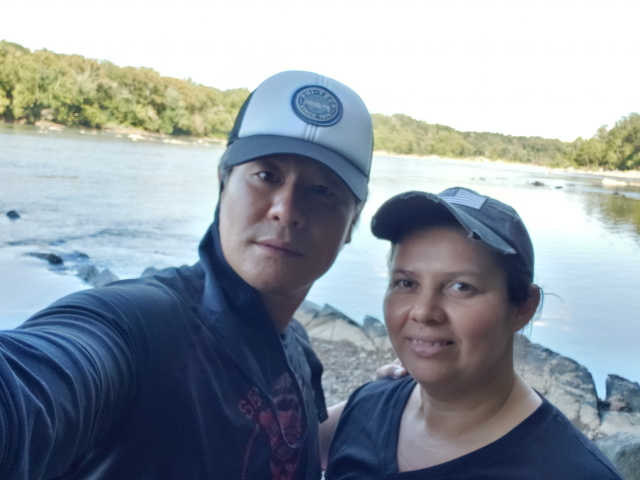Ana's Story

Last year, Ana Menjivar Centeno of Washington, D.C., became the first patient with cervical cancer to receive a radiation treatment called brachytherapy at the Johns Hopkins Kimmel Cancer Center at Sibley Memorial Hospital. After that treatment and other therapies, Centeno is back to work and says she feels better now than before she had cancer.
Centeno says she always went for regular checkups with a gynecologist, which included a Pap smear. But after a 2019 appointment, the doctor told Centeno her test was abnormal and referred her for a colposcopy, a procedure to closely examine the cervix, vagina and vulva for cancer or other diseases. Meanwhile, Centeno started having some vaginal discharge and needed to use sanitary pads every day, which was abnormal for her.
During the colposcopy at Unity Health Care (a partner of Sibley), the doctor, Tashima Lambert, MD, noticed a mass as soon as she performed the exam. Dr. Lambert took samples and put a rush request on the laboratory tests. Then, she called Centeno within a week to tell her she had cervical cancer. Dr. Lambert got Centeno the closest open appointment, and referred her to Jeffrey Lin, MD, director of Sibley’s Center for Gynecologic Surgery. Through the partnership, Sibley cancer experts established a cancer clinic within the Parkside Health Center in Northeast Washington to provide care to underserved patients in Wards 7 and 8.
Centeno says Dr. Lin explained to her she had stage 1 cervical cancer and described how chemotherapy and radiation would work, but she felt she wasn’t immediately ready to start treatment. After a few months of eating healthy and taking vitamins, Centeno returned to Johns Hopkins, and found her cancer had spread to stage 2. Oncologist Bruce Kressel, M.D., and radiation oncologist Victoria Croog, M.D., explained to Centeno the need to start treatment as soon as possible, and she accepted. She began chemotherapy and radiation treatments, with an expert team including Drs. Lin, Kressel, Croog, and radiation oncologist Akila Viswanathan, M.D.. They all made Centeno feel welcome and explained the therapies to her along the way.
Besides chemotherapy, Centeno received cutting-edge radiation treatments including external beam radiation therapy, which directs X-rays at the cancer from a machine outside the body. She also became the first gynecological cancer patient to receive magnetic resonance imaging (MRI)-guided brachytherapy at the hospital. This internal radiation therapy uses MRI guidance to place hollow tubes as close to the tumor as possible. Then, a seed of radiation is delivered to the tumor via the tube, sparing nearby healthy tissue. The technique was established at The Johns Hopkins Hospital in Baltimore in 2016, Dr. Viswanathan says, and was able to be given at the Johns Hopkins Proton Therapy Center at Sibley in the MR imaging suite.
“Through all of the periods I got treatment, the nurses and staff were always very nice,” Centeno says. “I didn’t even have to worry about making appointments, because they planned it for me and made everything easy.”
Centeno says she was fortunate to not have too many side effects during her treatment periods, and she appreciated the kindness and patience shown to her by the nurses, doctors and staff.
Several months after completing treatment, Centeno is working at a restaurant and says she feels great—even better than she did before being diagnosed with cancer. At her most recent checkup, her primary care physician told her she is very healthy, and all blood, thyroid, liver, bladder and kidney markers were normal.
Dr. Viswanathan stressed the importance of getting any concerning gynecological symptoms checked promptly.
“Most patients present with some sort of bleeding,” she says. “Any bleeding between menstrual periods, or postmenopausal bleeding, needs to be checked immediately by a gynecologist as part of cancer prevention.”
Another important means of preventing cervical cancer is getting annual gynecological checkups, including a Pap smear, Dr. Viswanathan says. And, the HPV vaccine, which can be given to children as young as 12, should be taken by every boy and girl to prevent the virus that causes cervical cancer, she says.
Learn more about cervical cancer and innovative research being conducted at the Johns Hopkins Kimmel Cancer Center.
